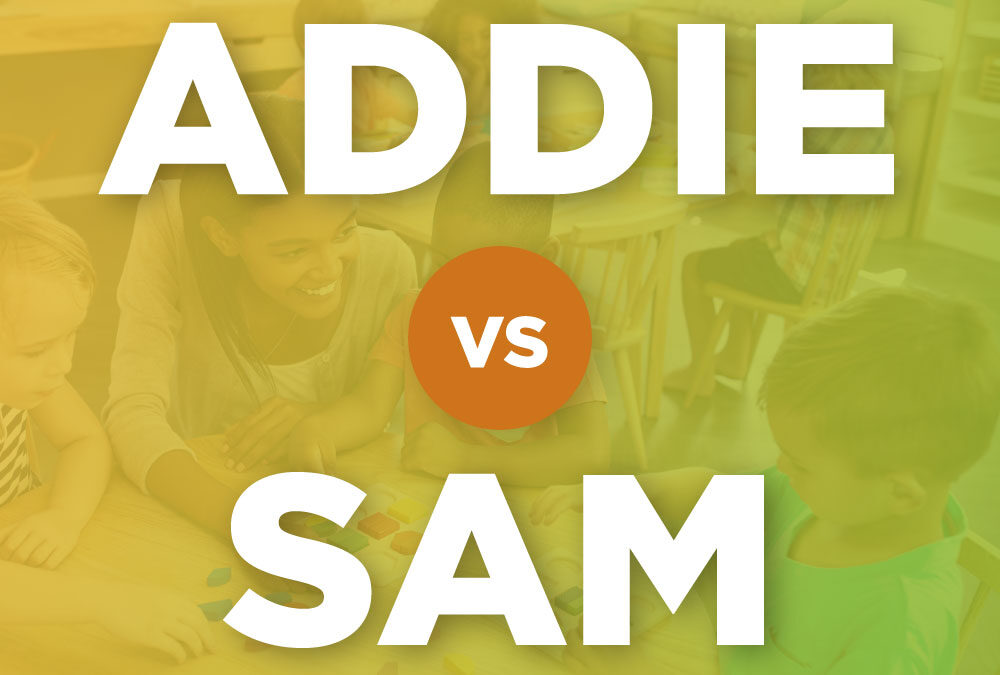If you’ve spent any time in instructional design, you’ve probably heard of ADDIE and SAM. These two models often come up when planning training or eLearning projects, but they work in very different ways.
So, which one is better for your project? Let’s break it down.
What Is ADDIE?
ADDIE is the classic instructional design framework. The name comes from its five phases:
- Analyze – Identify learner needs, goals, and challenges.
- Design – Plan learning objectives, structure, and strategies.
- Develop – Create course materials and activities.
- Implement – Deliver the training to learners.
- Evaluate – Measure effectiveness and refine.
Why people like ADDIE:
- Provides structure and clarity.
- Works well for large-scale or compliance-heavy projects.
- Emphasizes thorough analysis and evaluation.
Limitations:
- Can feel rigid and time-consuming.
- Slower to adapt when requirements change mid-project.
What Is SAM?
SAM (Successive Approximation Model) is a more flexible, iterative approach to instructional design. Instead of following a strict sequence, it emphasizes rapid prototyping and frequent feedback.
How it works:
- Preparation Phase: Identify goals, gather information, and set expectations.
- Iterative Design Phase: Create small prototypes, test with stakeholders, refine.
- Iterative Development Phase: Build the full solution in cycles, with constant feedback.
Why people like SAM:
- Faster development cycles.
- Flexible and adaptable to change.
- Encourages collaboration and early feedback.
Limitations:
- Less formal structure can feel chaotic without good project management.
- May not be ideal for projects requiring strict documentation.
ADDIE vs. SAM: Side-by-Side
FEATURE |
ADDIE |
SAM |
| APPROACH | Linear, Step-by-Step | Iterative, Cyclical |
| BEST FOR |
Large, complex, or compliance-based projects
|
Fast-moving projects, agile teams
|
| FLEXIBILITY | Low – harder to change once in motion | High – Adapts easily to feedback |
| DEVELOPMENT SPEED | Slower, Structured | Faster, Experimental |
| COLLABORATION | Involves stakesholders at checkpoints |
Involves stakeholders continuously
|
Which Model Should You Use?
The choice really depends on your project needs and environment:
- Choose ADDIE if… you need structure, detailed documentation, or are building large-scale, high-stakes training programs (like government, healthcare, or compliance).
- Choose SAM if… your project is smaller, needs quick turnaround, or benefits from constant iteration (like startups, pilot programs, or fast-paced corporate training).
👉 Pro tip: Many instructional designers don’t strictly stick to one model. Instead, they blend elements of both—using ADDIE’s structure for planning while borrowing SAM’s iterative mindset for prototyping.
Your Turn:
Have you used ADDIE, SAM, or a mix of both in your projects? Share your experiences—I’d love to hear how these models have shaped your work!
Final Thoughts
Both ADDIE and SAM are powerful models, but neither is a one-size-fits-all solution. Think of them as tools in your instructional design toolbox. By understanding the strengths and weaknesses of each, you’ll be able to choose (or combine) the right approach to create effective, engaging courses.
Contact California Dingo Media Today!
Thanks for reading!
David
(Cali Dingo)


Trackbacks/Pingbacks